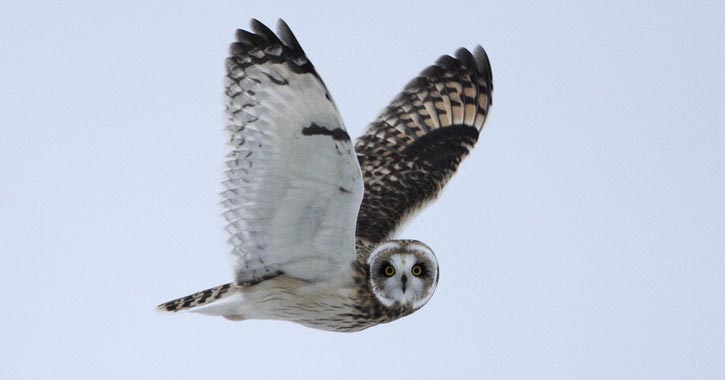Be a Better Birder: Precautions & Tips For Winter Bird Watching in the Adirondacks
For many bird watching enthusiasts, winter is one of the best seasons to go on a birding adventure in the Adirondack Park. The season offers a rare opportunity to see winter raptors as well as other birds and wildlife. However, because winter is a crucial survival period for these birds, it's important that you know how to observe them in a safe and legal manner.

The Popularity of Winter Birding
Birding is a fun year-round activity that encourages people to spend time in the great outdoors. During winter in the Adirondacks, bird watchers can expect to see songbirds around feeders, waterfowl and eagles near open bodies of water, and hawks and owls in large grasslands.
One of the main reasons the activity is so popular in winter is because winter raptors, including snowy owls, short-eared owls, and rough-legged hawks, migrate to Upstate New York and the Adirondacks from the Canadian tundra.
After spending much of the year breeding, raising young, and hunting in the tundra, these birds of prey move south for the winter to areas where they can roost and hunt for mice, voles, and other small prey, which they rely on for survival.
As a result, many people flock to the region for a chance to see these birds in the wild. While it's an exciting time of year for bird watchers, it can also be a dangerous one for birds.
The Importance of Safe Birding
While most birders are aware that winter is a crucial period for the survival of winter raptors and other birds, there are some who become over-enthusiastic at the chance of seeing these creatures.
Each year, there are reports of people who get too close and flush birds out their habitat or roosting site, which makes them waste energy. If this continues, then the loss of energy reserves can negatively impact a bird's ability to return north after winter, and sometimes can cause them to die.
In addition, there are others who trespass on private property in order to get up close to birds for a photo. This isn't just illegal, it can also be detrimental to the birds' survival.
What You Can Do to Help
If you'd like to go bird watching this winter and help ensure the birds' survival, then you should keep a respectful distance from them and abide by the general rules of birding.
General Guidelines
According to the NY State Department of Environmental Conservation, these are three of the best ways to observe birds in a safe and legal manner:
- Do not enter private property without permission of the landowner
- Park cars well to the side of the road, completely out of travel lanes
- Stay off the road while observing birds and pay attention to traffic, not the birds, when crossing roads
Moreover, New Hampshire Audubon has offered some useful suggestions to help people avoid disturbing birds. The first is to watch wildlife from your car if possible, and the second is to back up slowly if a bird begins staring at you.
Watch Out For Bird Habitats
A key part of respectful bird watching is being able to identify local bird habitats. If you know where birds typically roost or live in winter, then it'll be much easier to avoid disturbing them.
One of the most common habitats for winter raptors (including short-eared owls and snowy owls) are grassland regions. These large areas feature a lot of herbaceous vegetation and few trees and shrubs, and in winter, it's common for birds to nest and roost on the ground where there is snow cover.
If you're planning to go birding in this habitat, it's recommended to avoid crossing over open sections because you may not see the birds underneath all the snow. Instead, stick to the marked nature trails or go to a designated viewing spot.
Another common bird habitat in winter are forests and mixed wooded areas. Songbirds, woodpeckers, and even barred owls choose trees as their main roosting and nesting sites. To avoid spooking them, it's best to hold off on any tree or branch cutting projects this season, and try not to walk through brushy ground. If you do spot a bird in a tree, follow New Hampshire Audubon's advice to slowly back away.
Keep these top tips in mind during winter and the rest of the year, and you can feel good about doing your part in protecting the region's bird population.
Want more wildlife? Check out our full Birding Guide »
Sources of Information:
- https://content.govdelivery.com/accounts/NYSDEC/bulletins/1d910fc
- https://www.ibafriends.org/node/195
- http://ny.audubon.org/newsroom/press-rooms/snow-birds-new-york-s-winter-bird-population
- http://www.dec.ny.gov/outdoor/112582.html
Photos: Provided by the Friends of the Washington County Grasslands IBA, Inc.